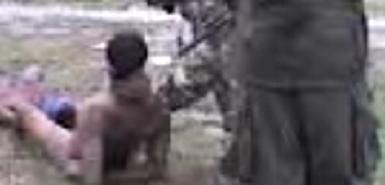 Video footage that appears to show Sri Lankan troops committing war crimes by summarily executing captured Tamil Tiger fighters on the battlefield was not fabricated, as claimed by the Sri Lankan Government, an investigation by The Times has found.
Video footage that appears to show Sri Lankan troops committing war crimes by summarily executing captured Tamil Tiger fighters on the battlefield was not fabricated, as claimed by the Sri Lankan Government, an investigation by The Times has found.
The findings come after General Sarath Fonseka, the former head of the army, alleged that Gotabhaya Rajapaksa, the Defence Minister, had ordered that surrendering Tiger leaders be killed rather than taken prisoner in the final days of the brutal 26-year civil war that ended in May.
The claims, vehemently denied by the Government, added to a lengthy list of war crimes allegations against it.
The video of the alleged battlefield executions, which was aired on Channel 4 in August, shows a naked man, bound and blindfolded, being made to kneel.
Another man, dressed in what appears to be Sri Lankan army uniform, approaches from behind and shoots him in the head at point-blank range. “It’s like he jumped,” the executor laughs. The camera then pans to show eight similarly bound corpses.
It is impossible to confirm when and where the filming occurred or the identities of the men shown. Pro-Tamil groups alleged that the video was filmed by troops on a mobile phone in January, when they overran the Tiger stronghold of Kilinochchi in the north of the country. Those claims were denied by government officials, who said they had “established beyond doubt” that the footage was fake.
An analysis for The Times by Grant Fredericks, an independent forensic video specialist who is also an instructor at the FBI National Academy, suggests otherwise. He found no evidence of digital manipulation, editing or any other special effects. However, subtle details consistent with a real shooting, such as a discharge of gas from the barrel of the weapon used, were visible.
“This level of subtle detail cannot be virtually reproduced. This is clearly an original recording,” said Mr Fredericks, who was previously the head of the Vancouver police forensic video unit in Canada.
There was also strong evidence to rule out the use of actors. “Even if the weapons fired blanks, the barrel is so close to the head of the ‘actors’ that the gas discharge alone leaves the weapon with such force it would likely cause serious injury or death,” Mr Fredericks said.
The reactions of those executed was consistent with reality, he added. “The victims do not lunge forward . . . [they] fall backward in a very realistic reaction, unlike what is normally depicted in the movies.”
In Mr Fredericks’s opinion “the injury to the head of the second victim and the oozing liquid from that injury cannot be reproduced realistically without editing cuts, camera angle changes and special effects. No [errors] exist anywhere in any of the images that support a technical fabrication of the events depicted,” he said.
The Sri Lankan Government said in a statement in September that the footage was “done with a sophisticated video camera, dubbed to give the gunshot effect and transferred to a mobile phone.”
Mr Fredericks’s research showed that code embedded in the footage appeared to match with software used in Nokia mobile phones.” He said: “The recording is completely consistent with a cell phone video recording and there are no signs of editing or alterations.”
The strong evidence that the footage does show real executions could reinforce international calls for an independent war crimes investigation — something that the Sri Lanka Government has resisted. A Sri Lankan army spokesman requested that a copy of Mr Fredericks’s report be sent to him yesterday, but did not reply when it was.
(For updates you can share with your friends, follow TNN on Facebook and Twitter )
